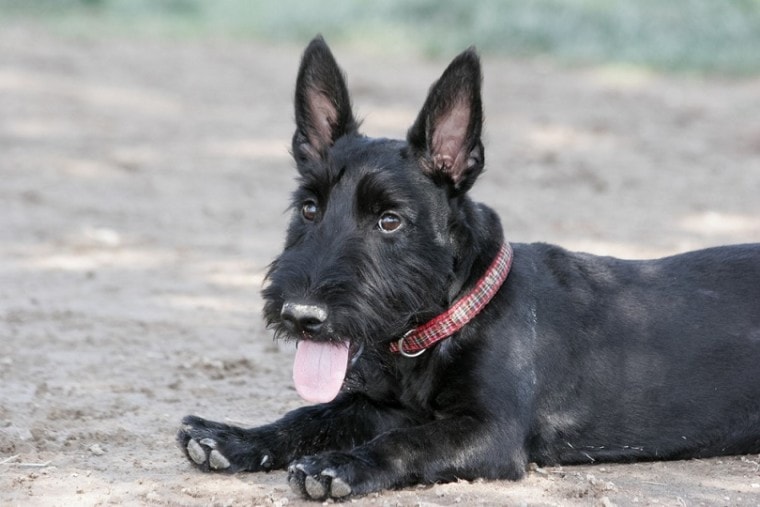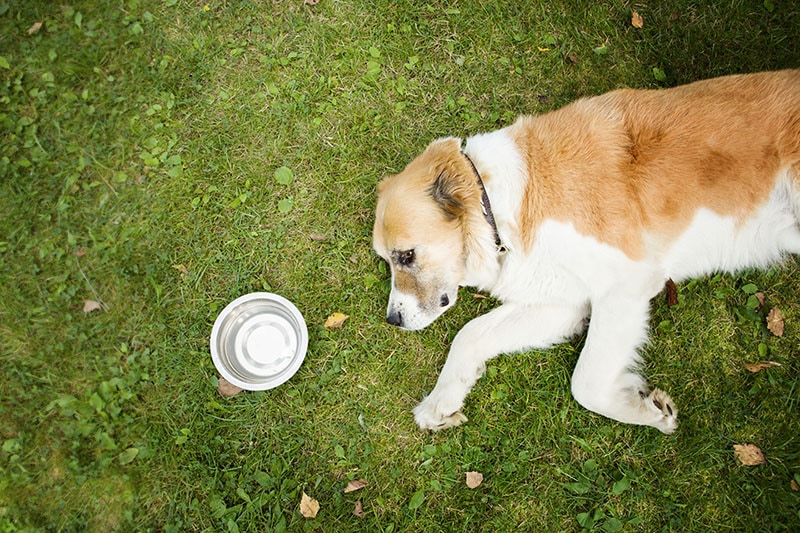
If you spend time outdoors in the hot weather, you know you’re likely going to end up drenched in sweat. This admittedly messy bodily function plays a vital role in keeping us cool, but have you ever wondered if dogs also sweat? While dogs are capable of minimal sweating, they don’t rely on this method to keep cool as we do.
In this article, we’ll tell you the surprising location on your dog’s body where it can produce sweat and how dogs rely on two primary bodily functions: panting and vasodilation. You’ll also learn how your dog does keep cool and how you can help keep their temperature normal in scorching weather. Finally, we’ll tell you how to recognize the early signs of heat stroke and what to do if you’re worried your dog is getting overheated.
 How Dogs Sweat
How Dogs Sweat
Humans have millions of glands that produce sweat, which helps release excess heat as it evaporates from our skin. Dogs have sweat glands in only one location: their paw pads. If a dog does produce sweat, it comes from its feet.
Because they have so few sweat glands, dogs can’t rely on this method to keep them cool. Sweating is a human’s primary cooling method because we can evaporate enough sweat to regulate our body temperature effectively. That’s not the case for dogs, so instead, they rely on two other methods, which we’ll discuss in the next section.

How Dogs Keep Cool
To keep their body temperature regulated, dogs rely on two primary bodily functions: panting and vasodilation.
Vasodilation
The term vasodilation refers to an expansion of the dog’s blood vessels. This mechanism pushes the dog’s warm blood closer to the surface of its skin, making it easier for it to cool. Vasodilation is most effective in locations like the dog’s ears and face.
Panting
Panting is the most well-known of a dog’s primary cooling methods. During panting, the dog loses body heat through moisture evaporating from their mouth and throat. Hot air from the chest is also pushed out of the body as the dog pants.
Most dogs rely on panting as their main way to cool off. If a dog can’t pant due to an injury or because it’s wearing a muzzle, it’s at greater risk of overheating.

Helping Your Dog Stay Cool
Panting and vasodilation are not the most effective ways to stay cool, so you’ll still need to take some precautions to keep your dog safe in hot weather.
Avoid exercising your dog or leaving them outside during the hottest part of the day. Make sure your dog has plenty of water and shade anytime they spend time outdoors in the heat. Access to a water source like a kiddy pool or sprinkler is also helpful.
Keep your house comfortable, and ensure your dog has a cool surface to lie on. Cooling mats are available if you don’t have an uncarpeted surface for your dog to rest on.
Never leave your dog alone in the car, even with the windows cracked or the air conditioner running. The inside of your vehicle can reach life-threatening temperatures quickly. Dogs can easily shut off a car or air conditioner by accident, or it could break.
Signs of Heat Stroke
Heat stroke, or hyperthermia, is the term for an increased body temperature. Excessively high temperatures, generally over 106 degrees Fahrenheit, put a dog at risk for life-threatening complications, including organ failure. Heat stroke is a medical emergency, and the faster treatment can start, the better.
If you suspect your dog is getting overheated, get them out of the sun and into a cooler location immediately. Get your dog to your vet or the nearest emergency clinic as soon as possible. Placing cool, wet towels on your dog’s belly and under their legs and keeping a fan or air conditioner on your pup can give you a head start on reducing your dog’s body temperature.
The longer your dog’s temperature stays elevated, the more potential damage to its body. Certain breeds of dogs are at higher risk of heat stroke because of their facial shape. French Bulldogs, Pugs, and other flat-faced breeds can overheat faster than dogs with normal noses.
 Final Thoughts
Final Thoughts
Dogs can sweat, but they don’t rely on sweating to keep them cool as humans do. Even with panting and vasodilation, dogs, especially flat-faced breeds, can become overheated faster than you might think. Heat stroke is a life-threatening emergency that can be expensive and difficult to treat. Help your dog stay cool and safe by keeping them inside when it’s hot, providing plenty of water, and never leaving them unattended in the car.
Featured Image Credit: GoDog Photo, Shutterstock

 How Dogs Sweat
How Dogs Sweat



